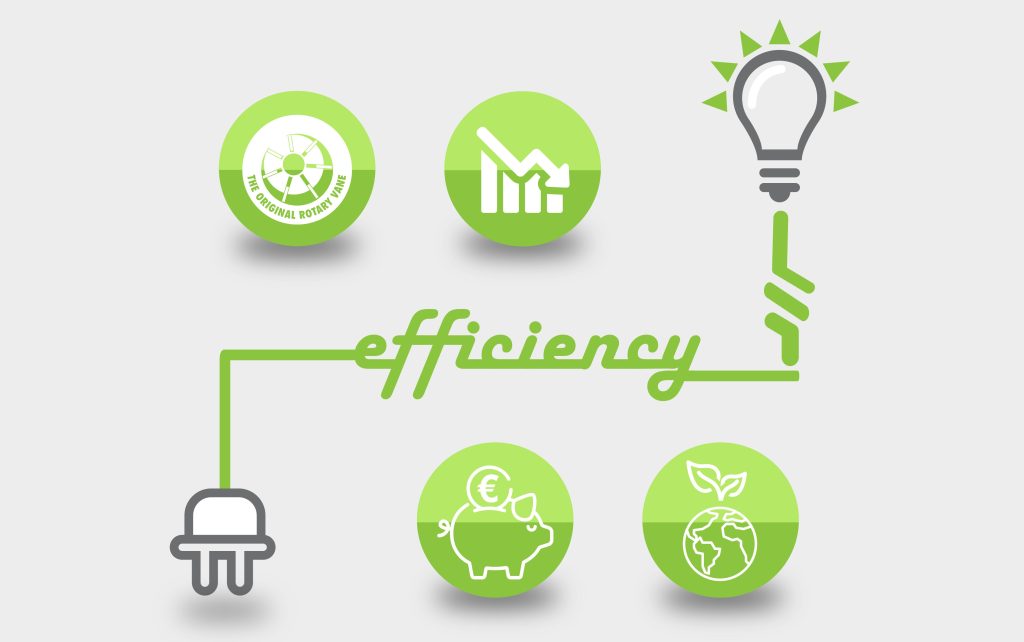Many public infrastructure projects are a big undertaking. Repairing or upgrading roads and bridges, building new hospitals, upgrading utilities and more takes time, money, and resources.
When governments work together with private firms, the resources they pool together than the resulting efficiency and accountability each bring to the table create better projects to provide the public top-notch services.
Table of Contents
What is a Public-Private Partnership?
Public-Private Partnerships (PPPs) are a strategic alliance between government entities and private companies. They bring together public resources and the expertise and efficiency of private companies to tackle large-scale projects.

PPPs are valuable tools, especially when it comes to project financing. PPPs provide much-needed funding and management for pivotal infrastructure developments, leading to improved efficiency and innovation in project execution. In addition to such efficiencies, PPPs are valuable tools that ease the burden on public budgets by leveraging access to private sector financing.
What Kind of Projects Does a PPP Cover?
If it’s a service that benefits the public good, a Public-Private Partnership can help. It can cover everything from education and healthcare to transportation and utilities – and more! Again, the collaboration provided by a PPP enables governments to harness the expertise and resources of private partners for a more successful project delivery while sharing the goals, risks, and rewards that come with the project.
Why Are PPPs a Growing Trend?
PPPs have become a growing trend in how our society addresses infrastructure needs. Strong partnerships foster collaboration, drive innovation in projects, and, ultimately, deliver better services to the public.
Financial Advantages of PPPs
There are a number of advantages to entering into a PPP, and spreading the load of financial obligation to a project a major benefit for all parties involved. These include:
Shared Risks
The saying goes: no risk, no reward. But in a Public-Private Partnership, the risk is spread across entities, and each entity reaps the whole reward from its involvement. It’s one of the top advantages of a PPP – each entity takes on and manages the risk or risks it is best equipped to handle. Frequently in PPPs, the government takes on political and regulatory risks while the private entity manages financial and operational risks associated with a project. The result: a more resilient approach to project execution.
On popular example of a risk-sharing mechanism in PPPs is the use of performance-based contracts, which ensure that the private partners stay motivated to deliver the promised result. An underperforming project can lead to fees or penalties, and ensures both public and private parties meet their commitments to provide an enhanced project outcome.
Cost Savings: Up Front Costs
Project owners always want to find the unicorn: a way to save money without compromising quality. Entering into a Public-Private Partnership can lead to significant cost savings for the government and private entities involved in the project by leveraging the strengths of each sector. Such a collaboration optimizes resource allocation to reduce overall expenses for each entity.

PPPs can help save money by minimizing initial capital expenditures. By including private sector entities from the start, they can carry some of the upfront costs the government may not be able to put down. When private entities carry the load of initial costs, governments can allocate their limited funds more effectively, and breathe easier. Rather than having to budget a significant amount to the new project, potentially taking away valuable funds from other public services for a time, governments can continue funding current services without significantly reducing the funds available to all government functions.
Cost Savings: Lifecycle Cost Efficiency
Cost savings in Public-Private Partnerships don’t stop at the initial investment. PPPs also promote project lifecycle cost efficiency. Private companies pride themselves on long-term success and are constantly developing and implementing cutting-edge strategies to reduce operational costs and maintain quality and efficiency. Private entities’ focus on quality, safety, and maintenance produces a quality project that will require fewer repairs or updates throughout the building’s lifespan.
Cost Savings: Systematic Risk Management
A Public-Private Partnership can benefit from cost savings through the better risk management strategies employed by private firms. In traditional financing models, the government continues to bear most of the risk, but a PPP shares risk in a more equitable way. Since everyone involved has an equal stake in project success, the collaboration leads to more strategic decision-making that results in fewer cost overruns.
Funding Opportunities
A Public-Private Partnership opens many financial doors. PPP collaborations give governments access to private sector capital – alleviating the whole financial burden from public budgets. There is a reduced risk that a project may face delays or even cancellation due to lack of funding.

Private investors provide upfront capital while the government provides long-term financing, meaning underserved sectors like public transit, renewable energy, and others benefit from more funding. Additionally, attracting private investors ensures better risk mitigation. Private investors don’t blindly provide funds, they conduct due diligence to ensure financial feasibility – when a private investor puts up funds, the chances of project success improve significantly.
Economic Stimulus
PPPs serve as powerful engines for the local economies they benefit. The combination of public resources and private sector expertise helps to stimulate job creation while enhancing infrastructure development in the area.
Job Creation
Public-Private Partnerships have an innate ability to create jobs. When private firms and government entities join together to undertake large projects, a substantial workforce is required. Extra workers are required from all entities involved, not only for project efficiency but to keep other services running while the project is being built. The construction, management, and other sectors will undoubtedly need extra workers. These jobs extend beyond the length of the build. Employees will be retained for operating the new facilities created during the project.
Infrastructure Improvements
Public-Private Partnerships are ideal for upgrading urban infrastructure, including roads, bridges, and public transit systems – all which bring significant benefits to the communities being served. New and improved infrastructure encourages business growth, increases property values, attracts new residents, and more! Improving infrastructure goes a long way in maintaining, improving, or revitalizing struggling communities.
Long-Term Investment in Public-Private Partnerships
Entering a Public-Private Partnership isn’t just about immediate gains and easing the burden during planning and construction. PPPs play an important role in promoting long-term investment in public infrastructure projects, resulting in a more profound impact on the overall maintenance and sustainability of the project.
Promoting Sustainable Development
In residential, commercial, and government/public building projects, sustainability has become the name of the game. Not only are project owners and stakeholders looking to greener, more sustainable building practices and materials, they’re looking for sustainability over time.
PPPs encourage thinking in the the long-term. When private firms invest in public project, with it comes their commitment to ongoing performance. These companies’ innovated management and maintenance techniques leads to better upkeep for critical infrastructure over time.

When private firms invest in public building projects – like roads and bridges – they put their best foot forward to ensure longevity through the use of durable materials and efficient designs public entities may not otherwise have access to. Immediate construction along with sustainable development practices benefit communities not only in the present but for years to come.
Maintenance and Upkeep
Another long-term advantage of Public-Private Partnerships is the shared risk – and responsibility for maintenance. PPP contracts outline the duties of all parties involved in the project. Typically, the private entity will handle day-to-day operations resulting in improved efficiency over the life of the project after construction. With management of the project in question, public entities can focus on broader management and oversight of all of its services.
PPP contracts include various performance metrics for private firms, ensuring accountability throughout the project’s life cycle. Contracts may require regular evaluations, maintenance, and repairs to keep projects in alignment with public needs and standards over time.
Attraction of Long-Term Investors
Public-Private Partnerships provide a reliable revenue stream and predictable cash flows: two things long-term investors love. Long-term investors often seek opportunities that offer security and a stable return, meaning PPPs can attract significant capital and resources into often-neglected sectors that struggle to maintain funding. Long-term investors are reassured by PPPs, as the partnership alleviates excess worry through shared risks and returns.
PPPs Open Doors
Entering into a Public-Private Partnership can open doors perviously closed to both the public and private entities involved. When governments and private firms work together, combining resources, doors that were previously closed or resources perviously inaccessible become more readily available to create a top-notch project. Improvements that become accessible through PPPs include:
Innovation Facilitation
As we may have mentioned, Public-Private Partnerships act as a catalyst for innovation. When public sectors combine forces with private entities, the result is a powerful mix of creativity and resources. A PPP collaboration opens doors to new technologies and innovative solutions that benefit the community and society as a whole.

PPPs encourage the private firms involved to use their cutting-edge strategies and access to the newest technologies to enhance offerings to meet the specific needs of the project. Without this access, the traditional public sector procurement process will slow down the adoption of such ideas and methods, leading to less efficient or ideal projects.
Enhanced Accountability
Accountability is a big part of any project. With Public-Private Partnerships, it’s even more important. Deciding who is responsible for which parts of the project goes a long way toward success. PPPs enhance this accountability with rigorous contractual obligations – clear expectations and ramifications – for all parties involved.
Performance Metrics
The contracts of PPPs often incorporate detailed performance metrics. Such metrics allow the government and private entities involved to accurately measure success, such as on-time completion rates or service quality standards. When tied to financial incentives, the motivation to achieve these goals increases.
Regular Reporting
As with any project, progress reports are necessary in PPPs. Reports keep stakeholders – the government as well as private entities involved – informed of the project status at regular intervals.

Sticking to transparency in reporting creates a system of checks and balances that give stakeholders are clear picture and identify any issues early in order to implement corrective action quickly. Accountability through regular reporting means improved project outcomes as well as improved stakeholder trust – throughout the project and into the future.
Contractual Obligations
Public-Private Partnership contracts are thorough and detail the roles and responsibilities of each stakeholder involved. If one party fails to meet its obligations to the project, there are predefined channels for finding solutions. Such strong requirements spur strong incentive for everyone to uphold their part of the contract.
Increased Scrutiny
When it comes to serving the public good, public agencies have a vested interest in monitoring outcomes closely for quality. This heightened oversight leads to better decision-making and increased accountability for all involved. Additionally, the public at large has an interest in how their tax dollars are being spent, and misuse can lead to public outcry.
Enhanced Efficiency
Efficiency is key when it comes to accurate and timely delivery of any project. Public-Private Partnerships inject a level of efficiency that significantly transforms project outcomes when compared to projects taken on solely by public or solely by private entities. Involving the expertise and innovation of a private company enhances productivity and efficiency for a faster completion timeline without compromising quality.

This enhanced efficiency and innovation doesn’t just improve project timelines or quality, it makes financing more attractive. Investors want to fund projects that promise solid returns and minimal risks. Faster, more efficient project execution leads to quicker revenue generation for the public as well as private entities involved.
Access to Expertise
When tackling a large project, it’s best to have specialized experts at the helm. Public-Private Partnerships help bridge the gap between governmental resources and private sector knowledge. Governments can tap the specialized skills and innovations private companies can offer that may not be available in the public sector. Accessing this expertise allows governments to enhance project quality and efficiency.
Additionally, private entities typically employ or contract with professionals with diverse backgrounds and extensive and quality experience. Bringing these specialized workers to the table can offer unique insights and decision-making methods from project design to project execution. Another benefit: government projects stay on the cutting-edge of innovation and ensure the project aligns with current industry standards.
Improved Public Services: Faster Delivery
Through Public-Private Partnerships, the quality of public services is significantly enhanced. Private sector firms can offer advanced project management techniques that streamline processes and mitigate the bureaucratic delays associated with solely publicaly-funded projects. With the help of private entities, critical public infrastructure, like hospitals, may open months earlier than if the government provided the sole funding source.
Improved Public Services: Quality Improvements
Public-Private Partnerships focus on and prioritize quality. The potential profit to a private firm incentivizes them to delivery high-quality products and services. While private firms pride themselves on high quality, a PPP means they must also maintain those standards to meet contractual obligations, ensuring public services are delivered promptly and are effectively managed.
Improved Public Services: Advanced Technologies
Private firms strive to put themselves on the cutting-edge of technology. Firms collaborating with public entities through PPPs often infuse these technological advancements into the project. Public services thus become more technologically advanced and in-line with private sector innovations for similar services.

Improved Public Services: Responsive Customer Service
If you’ve ever called a public service office for help, you may have been met with an automated answering service and had trouble navigating it to find the right person with the right answer. Private firms, however, emphasize customer service, and bring that priority to the table in a PPP. Involving a private firm in a public project can improve client support and feedback for quick adaptation for user needs or concerns. The result: a better public experience.
Final Thoughts
Public-Private Partnerships are a wonderful tool when it comes to tackling large-scale projects that involve the public at large. Our dedication to sustainability, innovative solutions, and a client-centric approach can help you facilitate your next Public-Private Partnership construction project.
Contact us today!




0 Comments